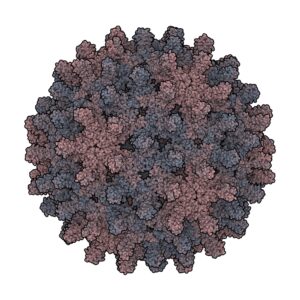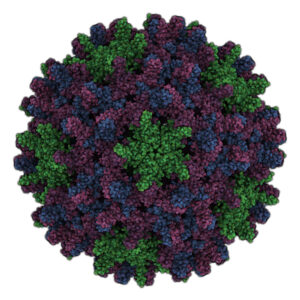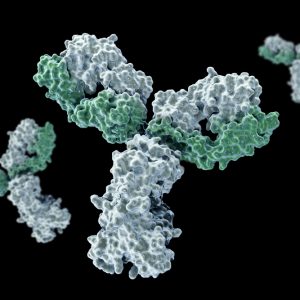Hepatitis B
Hepatitis B is a potentially life-threatening liver infection caused by the hepatitis B virus (HBV) and is a major global health problem. It can cause chronic infection and puts people at high risk of death from cirrhosis and liver cancer. A vaccine against hepatitis B has been available since 1982 and is 95% effective in preventing infection, the development of chronic disease and liver cancer from the virus.
The Native Antigen Company offers a large panel of monoclonal antibodies specific to Hepatitis B, suitable for R&D and immunoassay development.
Hepatitis B Background
Hepatitis B virus (HBV) is a small, partially double-stranded DNA virus that belongs to the genus Orthohepadnaviruses of the Hepadnaviridae family of viruses. Currently, eight genotypes of HBV are recognised, designated A-H, with each genotype having a distinct geographical distribution. HBV is a retrovirus that replicates by reverse transcription through an RNA intermediate. HBV encodes seven proteins, recognised as preCore, core, pol, X (HBx), and envelope proteins L, M and S (Liang ,TJ).
First recognised in the 1940s as an infectious agent causing hepatitis, the HBV virus was identified in the mid-1960’s when HBV particles were detected in a patient’s serum. The particles, initially referred to as Australia antigen, were subsequently found to be HBV envelope proteins L, S and M. Collectively these particles are now known as hepatitis B surface antigen (HBsAg) (Seeger, C).
HBV is a bloodborne virus, transmitted through contact with infected blood or bodily fluids. HBV infection may occur through various routes including the sharing of needles for injecting drugs, the use of inadequately sterilised medical equipment infected with HBV and the transfusion of unscreened blood and blood products. In endemic areas, perinatal transmission of HBV from mother to child is common.
HBV infection causes liver disease, which can vary from acute to chronic hepatitis, to cirrhosis of the liver and potentially hepatocellular carcinoma. The incubation of HBV infection can vary from 1-6 months. During a period of acute infection, most individuals remain asymptomatic. However, some patients develop acute illness presenting with clinical symptoms that include jaundice, nausea, vomiting, abdominal pain and extreme fatigue. Acute liver failure occurs in 1% of patients, which can be fatal. HBV infected patients may also develop chronic lifelong disease, which can progress to cirrhosis or hepatocellular carcinoma in 20-30% of adult cases (WHO).
The asymptomatic nature of HBV infection and the similarity of clinical symptoms to other types of hepatitis virus infection makes clinical diagnosis difficult. Therefore, laboratory diagnosis is undertaken using serological and molecular methods to detect HBsAg and specific IgM antibodies recognising core antigen HbcAg.
References
- Liang TJ.2009. Hepatitis B: the virus and disease. Hepatology.May;49(5 Suppl): S13-21
Seeger C, Mason WS.2015. Molecular biology of hepatitis B virus infection. Virology.May;479-480:672-86. - World health Organization: Factsheet, Hepatitis B
Hepatitis B Antigens
Our Hepatitis B antigens include highly purified preparations of Envelope protein. These antigens are suitable for use in assay development, vaccine research and for the preparation of Hepatitis B antibodies.
Hepatitis B Antibodies
The Native Antigen Company offers a large panel of monoclonal antibodies specific to Hepatitis B. These antibodies recognise a number of different HBV-specific proteins, including Hepatitis surface antigen, Hepatitis core antigen, and Hepatitis E antigen, all of which may be used in a wide range of applications to study the biology of Hepatitis B.
Questions?
Check out our FAQ section for answers to the most frequently asked questions about our website and company.





